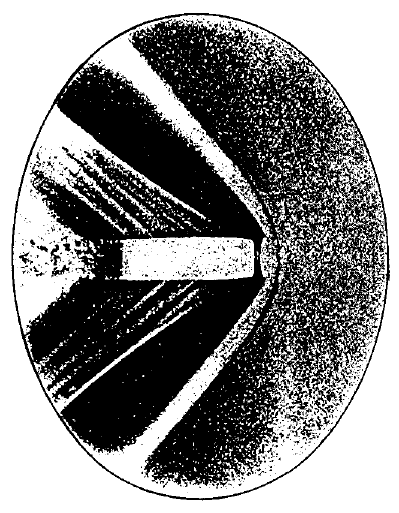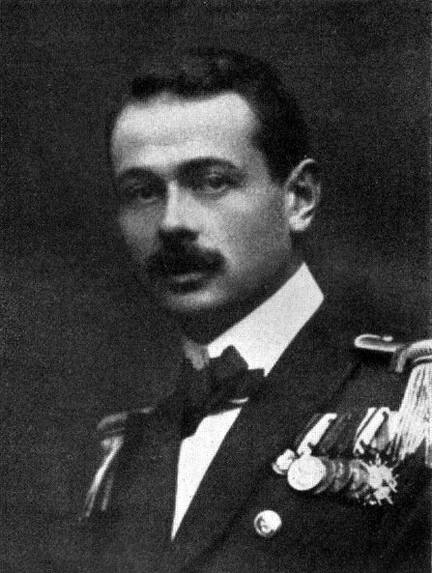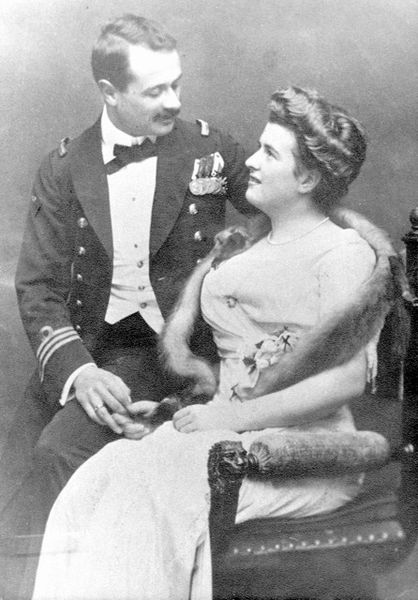What Do X-Rays, Bullets and The Sound of Music Have in Common?
January 5th, 2022 - On this day in 1896, the discovery of X-rays first made the news. The groundbreaking invention soon had its Croatian debut, and once you start looking into the story, it quickly becomes apparent what a lively place Rijeka was at the time. Join us as we go down a historical rabbit hole, featuring a naval academy, a few visionaries - and Captain von Trapp
On January 5th, 1896 a groundbreaking scientific discovery was presented to the public. The Austrian newspaper Wiener Presse first reported that Wilhelm Röntgen discovered a new type of radiation - X rays.
While the German scientist himself named the radiation ‘X’, to this day it’s referred to as Röntgen rays in many European languages, including Croatian (getting an X-ray translates to taking a Röntgen).
A lesser known fact is that X-rays made their Croatian debut shortly after the first international reports of Röntgen’s discovery.
In the late 19th century, the Royal Naval Academy in Fiume (Rijeka) used to be one of the leading educational and scientific institutions in the Austro-Hungarian empire. Its prestigious reputation attracted a lot of talent from all over the empire, including an Austrian physicist named Peter Salcher.

Peter Salcher (1890)
Salcher joined the academy as a physics and mechanics professor, and soon became head of the meteorological station. He was a Renaissance man of sorts, a curious mind interested in science at large, as well as scientific photography and photojournalism.
It’s no wonder that the news of Röntgen’s discovery piqued his interest. On February 21st 1896, Salcher held a public lecture in Rijeka at which he demonstrated the usage of X-rays. Naturally, the local high society was eager to attend the thrilling presentation, among them baroness Josephina Mollinary-Vranyczany.
The baroness bravely volunteered as a test subject for the curious invention, and so Salcher took an X-ray of her hands before the excited audience, the first X-ray image created in Croatia. This one:

X-ray image of baroness Josephina Mollinary-Vranyczany's hands (1896)
Shortly thereafter, the city hospital in Rijeka adopted the invention and began using an X-ray device.
This is not the only thing Salcher’s remembered for, as he was the man behind another groundbreaking scientific experiment that took place in Rijeka. A decade before X-rays were invented, Salcher made history by recording the flight of a bullet shot from a firearm using a special high-speed photography technique.
He devised the experiment after he’d been approached by Ernst Mach, a physicist who was having trouble proving his shockwave theory in practice. Salcher got to work with the help of his associate Sándor Riegler, resulting in 80 shots of supersonic flying bullets. It was the first such achievement in history, and the images can be seen at the permanent exhibit at the Rijeka City Museum.

An image of a flying bullet taken by Peter Salcher (1886)
At this point, we very well might be playing six degrees of separation. Many prominent figures were part of the scientific community in Rijeka back in the day, including a particular student of professor Salcher who would later gain international fame.
It was Georg von Trapp - yes, that von Trapp, the head of the family whose story inspired The Sound of Music. A member of a noble family of Austrian origin, Georg Ludwig von Trapp was born in Zadar and entered the Naval Academy in Rijeka at the age of fourteen, which led to an illustrious military career as a naval officer.

Georg Ludwig Ritter von Trapp
Von Trapp married Agathe Whitehead, granddaughter of Robert Whitehead, the inventor of the modern torpedo and founder of the world’s first torpedo factory. The couple met at the launch of a newly built U-boat in Rijeka where Agathe had the honour of christening the vessel; Georg reportedly fell head over heels for her at the celebratory ball on the same evening. They were married after a two-year courtship - learn more about their love story on the pages of the Georg & Agathe Foundation.

Georg von Trapp and Agathe Whitehead (circa 1909)
Agathe died of scarlet fever in 1922, and Georg moved into a villa near Salzburg with their seven children. You surely know how the rest of this story goes - he hired Maria Augusta Kutschera as the kids’ tutor, they got married a year later and had three more children together. Since everyone in the family was musically gifted, they soon started performing as a vocal ensemble around the world, eventually moving to the United States.

The Trapp Family ensemble at a 1941 performance
Maria Augusta wrote a memoir about the musical journey of the von Trapp family. It served as inspiration for several German films, the 1959 Broadway musical, and the 1965 film The Sound of Music.
So many good stories, all connected to each other - it seems Rijeka really was the place to be at the turn of the century, wasn't it?
Torpedo - Croatian Invention Which Changed Naval Warfare Forever
At the Croatian Maritime Museum in Split, the most valuable specimens of torpedo weapons have been being exhibited from the world's first torpedo factory, in Rijeka. This British-Croatian invention took the world of naval warfare by storm, and its two creators, one from Rijeka in Croatia and the other from Bolton in England, are being honoured.
As Morski writes on the 30th of March, 2019, the museum's curators Petra Blažević and Ljubomir Radić formed a new museum exhibition of the torpedo collection back in 2016. The occasion was the 150th anniversary of the emergence of torpedoes, which was once the most prominent weapon to have existed in naval warfare, the prototypes of which were created by Giovanni Biagio Luppis Freiherr von Rammer, sometimes also known by the Croatian name of Vukić, a Croat born in Rijeka, who served in the Austro-Hungarian Navy.
We often hear that the torpedo was entirely invented in Croatia, but in terms of international recognition, that honour goes to the the British public, more specifically to Robert Whitehead, an English engineer born in Bolton in northern England, who gained his fame for the development of the very first effective self-propelled naval torpedo.
Luppis, born in Rijeka with family ties to the southern Dalmatian region of Pelješac, had the desire to create the so-called "coast guard,'' which was a self-managed ship loaded with an explosive to protect the coast from attacks coming from the sea. Since he had no funds for the development of such a project, nor did he have the proper engineering knowledge for the task, he connected with the manager of the Rijeka metals factory, Robert Whitehead, a Brit.
From their friendship and cooperation there came a weapon called a torpedo, and how frightening it was to gaze upon this newly-made weapon, French travel writer Victor Tissot testifies, who, after his stay in Rijeka, referred to it as "the most terrible of all sea monsters".
Soon after the ''birth'' of the torpedo, Luppis went to live in Italy and sold his share, production remained in the hands of his friend Robert Whitehead, who was still across the Adriatic sea in his factory in Rijeka. By the end of the 19th century, most of the world's navies started to acquire the Rijeka-made torpedoes and warfare at sea became unthinkable without the use of this weapon, at least until the end of the second world war.
As a natural continuation of the valorisation of this truly outstanding torpedo collection, which has been inherited by the Croatian Maritime Museum in Split, the authors of the exhibition have created a book with a catalog of the collections.
''Both the exhibition and the book bring out the historical context of the torpedo's creation, the biographies of both Luppis and Whitehead, and a series of interesting uses of torpedoes on torpedo boats. The bilingual book, which in honour of the torpedo's British and Croatian creators, has been published in Croatian and English, was promoted to the public back in February at the Nikola Tesla Technical Museum in Zagreb and then again in March in Split,'' said Radić.
Make sure to follow our dedicated lifestyle page for more on Croatian history, inventions, heritage, and much more.
Caroline of Rijeka: The Woman Who Saved the City from British Invasion
One of the most famous figures in Rijeka's history is Caroline of Rijeka, a woman who singlehandedly saved the city from British invasion during the Napoleonic wars. A look at this exceptional lady on March 23, 2018


